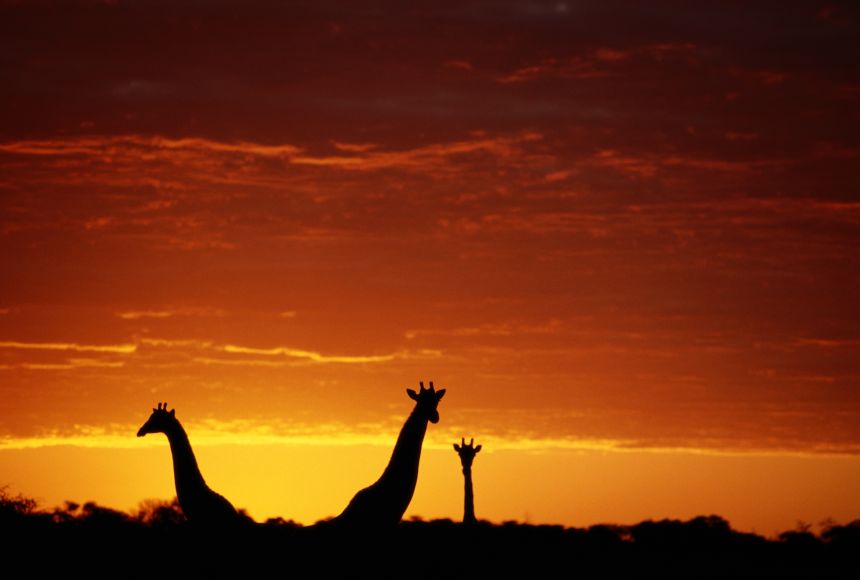In the northwestern region of the African country of Botswana, lies an oasis in the northernmost part of the Kalahari Desert. The United Nations Educational, Scientific and Cultural Organization (UNESCO) World Heritage Centre and the Ramsar Convention on Wetlands of International Importance have deemed this oasis, the Okavango Delta, a site worthy of protection.
The Okavango Delta is home to almost 2,000 species that depend on the habitats of the delta for survival. Many threatened and endangered species, such as the African wild dog (Lycaon pictus), the southern ground-hornbill (Bucorvus leadbeateri), the giant ground pangolin (Manis gigantea), the black rhinoceros (Diceros bicornis), and the white rhinoceros (Ceratotherium simum), make this inland delta their home. In addition to these animal populations, about 150,000 people live in and around the delta and depend on the resources it provides for their own ways of life. Because the delta is a permanent source of water and has diverse wildlife and habitats, it has been an increasingly attractive area for tourism, wildlife poaching, and farming. All of these activities threaten the integrity of this gem in the Kalahari Desert.
Compounding Concerns
There are many interrelated factors that significantly affect the delta’s ecosystem.
Water and Land Threats
Water abstraction, the removal of water from its source for human use, is an issue affecting the delta.
Currently, abstraction from the upper part of the delta is not a large concern, but it could become one with increasing industrial demands. If Angola, Botswana, or Namibia wants to divert water from the Okavango River before it reaches the delta, their plans need to be approved by the Permanent Okavango River Basin Water Commission (OKACOM). OKACOM’s mission is not only to promote economic prosperity but also social justice and environmentally healthy development of the Cubango-Okavango River Basin. While this is a long-term concern, according to UNESCO, more immediate challenges include declining large mammal populations, non-native plant control, and ensuring proper management of local community access rights and benefit sharing.
Another problem that could gravely affect the Okavango is the use of artificial fertilizers. Artificial fertilizers contain high amounts of nitrogen and phosphorus to aid plant growth. Because the delta is relatively flat, there would be nothing to stop the runoff from crop fields. The fertilizer-rich runoff water would drain into the main channels and swamps of the delta and spur the growth of algae. Large amounts of algae in a waterway reduce the amount of oxygen in the water, which fish and other aquatic life need to survive.
Poaching Threat
With abundant wildlife comes abundant tourism and, unfortunately, abundant poaching. Most poachers hunt to obtain meat for their families, but some sell the meat. Even more unfortunate, some poachers are working to supply the black market, mostly with ivory from elephant (Loxodonta africana) tusks. In September of 2018, 87 elephants were found dead with their tusks removed near the border of the Okavango Delta. The ivory from elephant tusks has historically been used for many things, from billiard balls to piano keys. Today, most ivory is used to make knickknacks or is sold on the black market, mainly to Asian buyers for ornamental purposes and status symbols.
Elephants are not the only animals threatened by poaching. Poachers hunt lions (Panthera leo) to harvest their bones, which are then sold and ground up for traditional eastern medicines. Rhinos are being hunted for their horns, which are valued as ingredients in traditional medicines and as status symbols.
One solution to poaching proposed by the UN Food and Agriculture Organization is to turn poachers into “good guys.” As experienced hunters, poachers have wilderness skills and knowledge, and they might be willing to use their abilities as wildlife managers. Finding illegal hunters who are open to the idea of preserving species instead of killing them for their meat or their parts might alleviate the problem of poaching.
There is Still Time
The Okavango Delta’s vast expanse of swamps and grasslands is home to nearly 2,000 species, including humans. With proper management, there is still hope to save this distinctive wilderness, enabling it to continue supporting a vast quantity and diversity of life.
